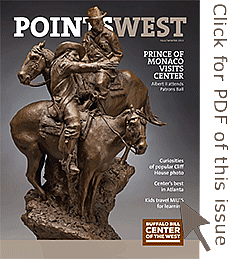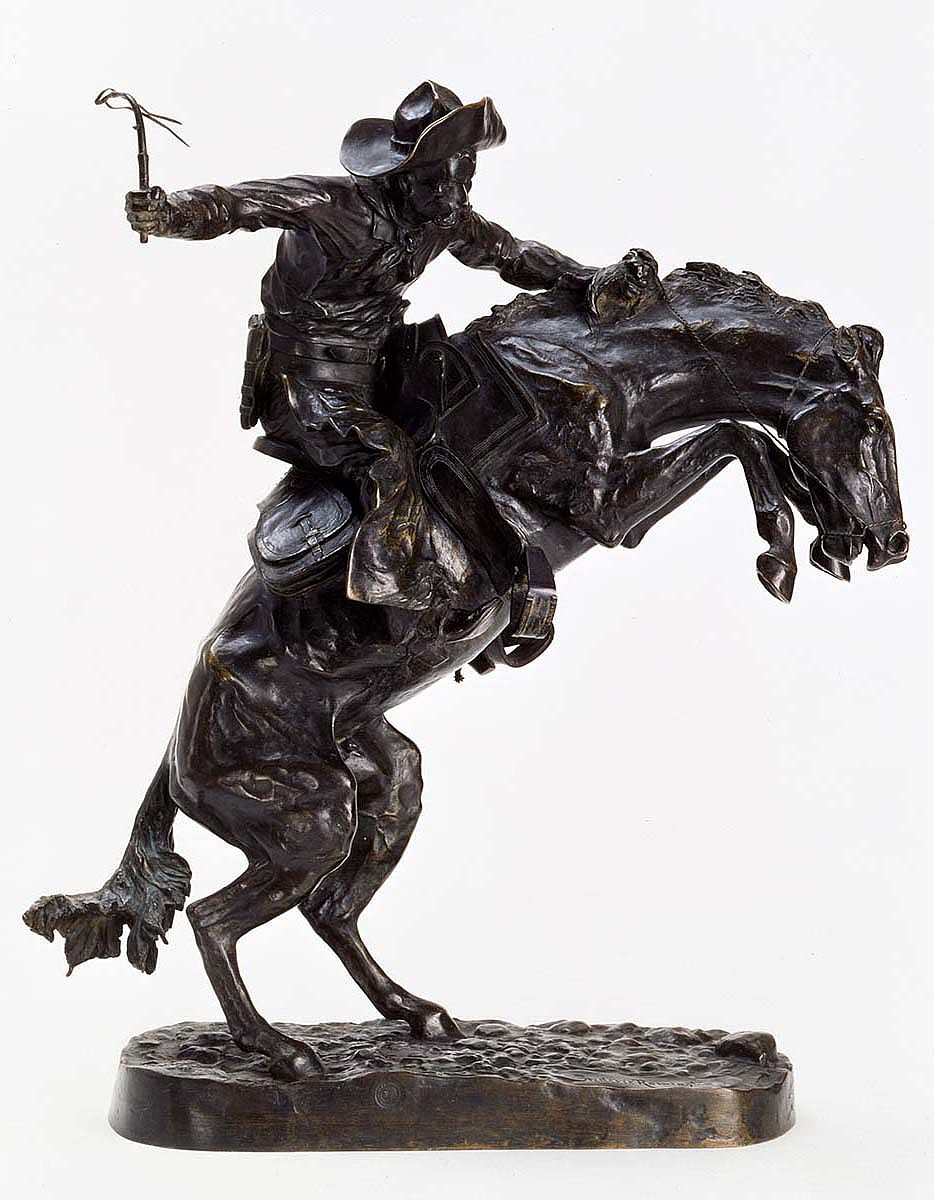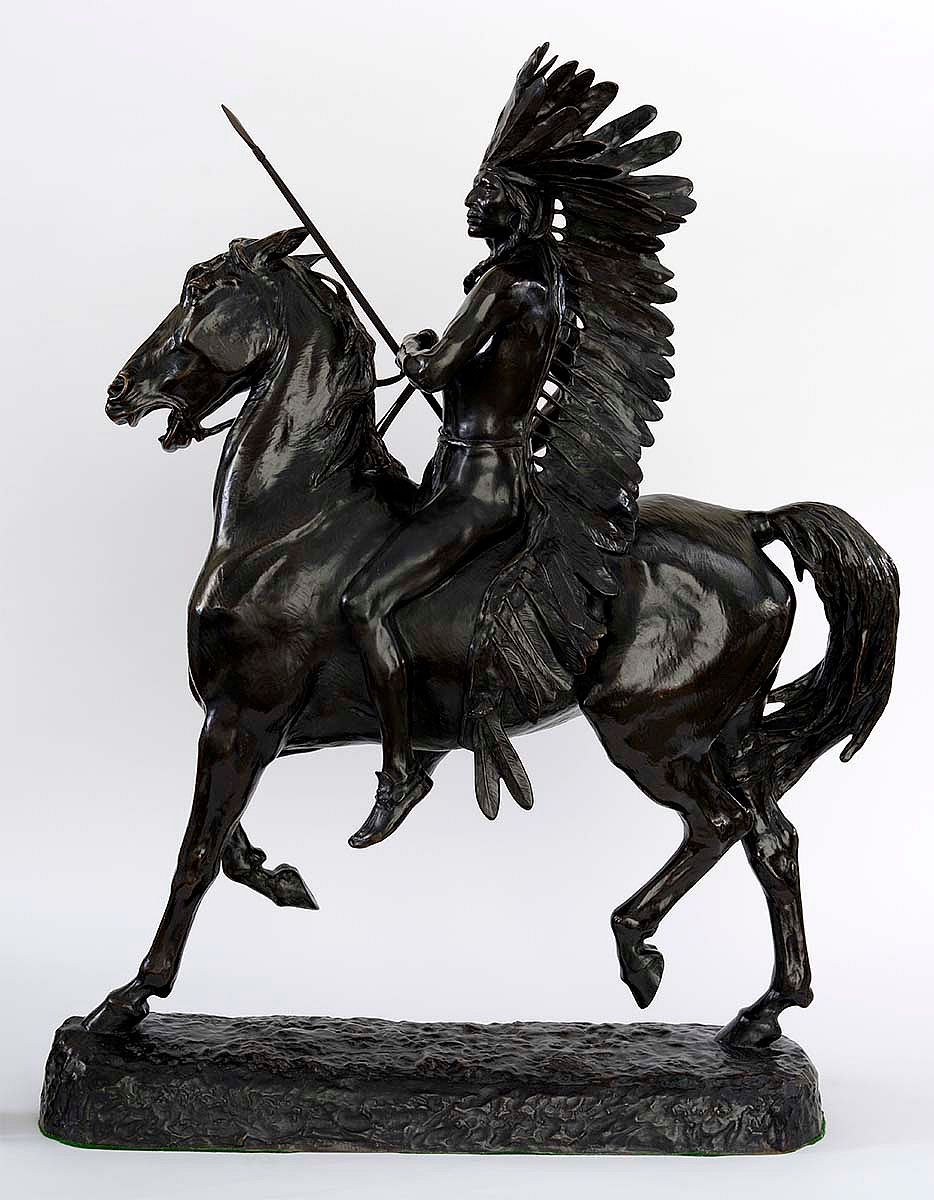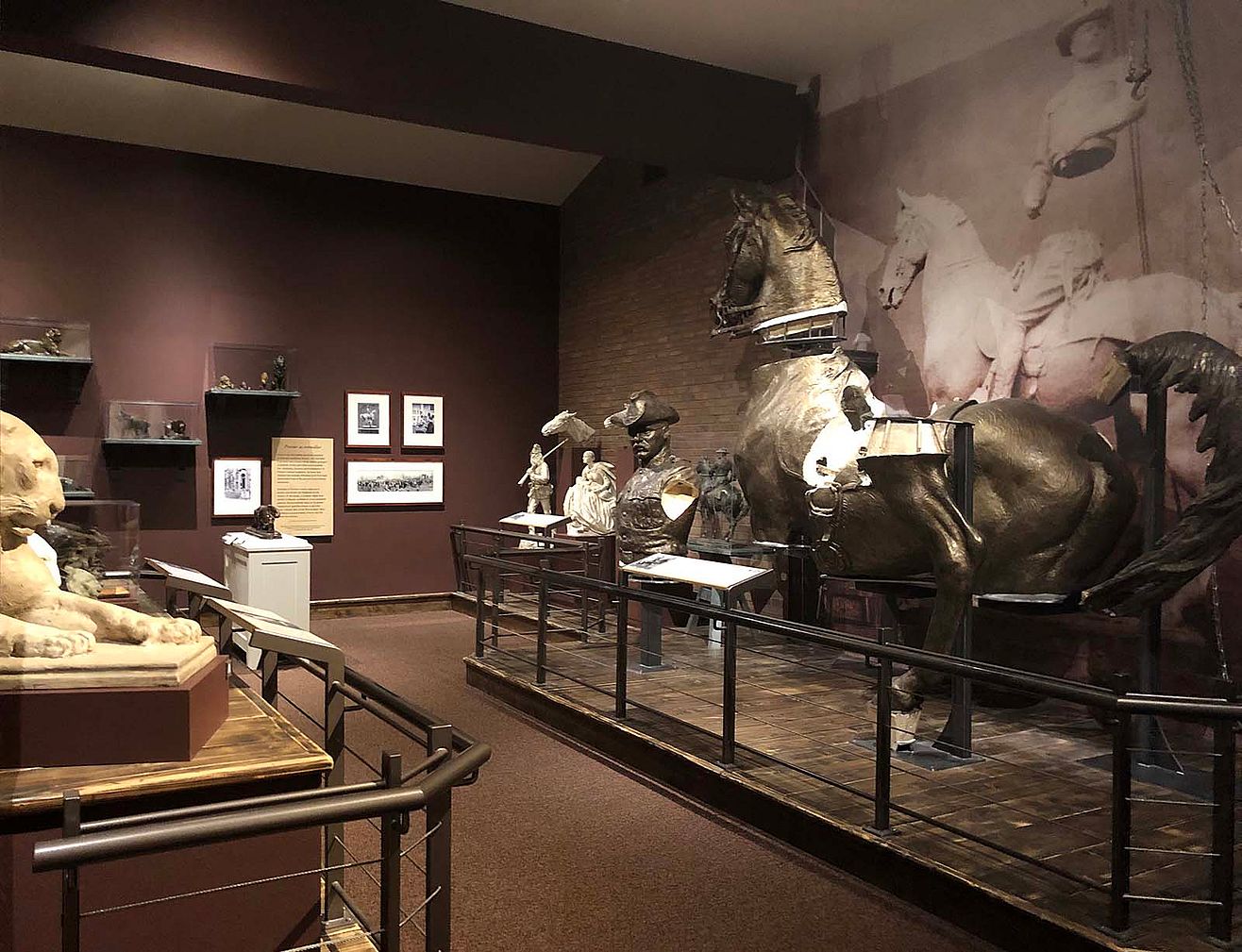
The American West in Bronze: 1850–1925 – Points West Online
Originally published in Points West magazine
Fall/Winter 2013
The American West in Bronze
1850–1925
By Peter H. Hassrick
On December 17, 2013, the Metropolitan Museum of Art in New York opened a major exhibition titled The American West in Bronze: 1850–1925. It was the first comprehensive exhibition of American sculpture with western-related themes to ever be mounted. It included more than sixty bronzes from the period, borrowed from about twenty-five museums and ten private collections across the country. The exhibition required six years of traveling on the part of curators to some twenty important collections as they inspected and evaluated the quality of hundreds of related works. Their final choices for the exhibition represented the absolute finest castings of each bronze on display.
The exhibition had its genesis about a dozen years earlier when I was working as an independent scholar in Cody and designed a show of Solon Borglum’s bronze and marble sculptures to be circulated by the Trust for Museum Exhibitions in Washington, D.C. The Trust tried valiantly to market the Borglum exhibition to a broad spectrum of American museums, but sadly, there were no takers. It seemed that no one really knew who Solon Borglum was, and so the museums hesitated to host a show without a recognizable protagonist.
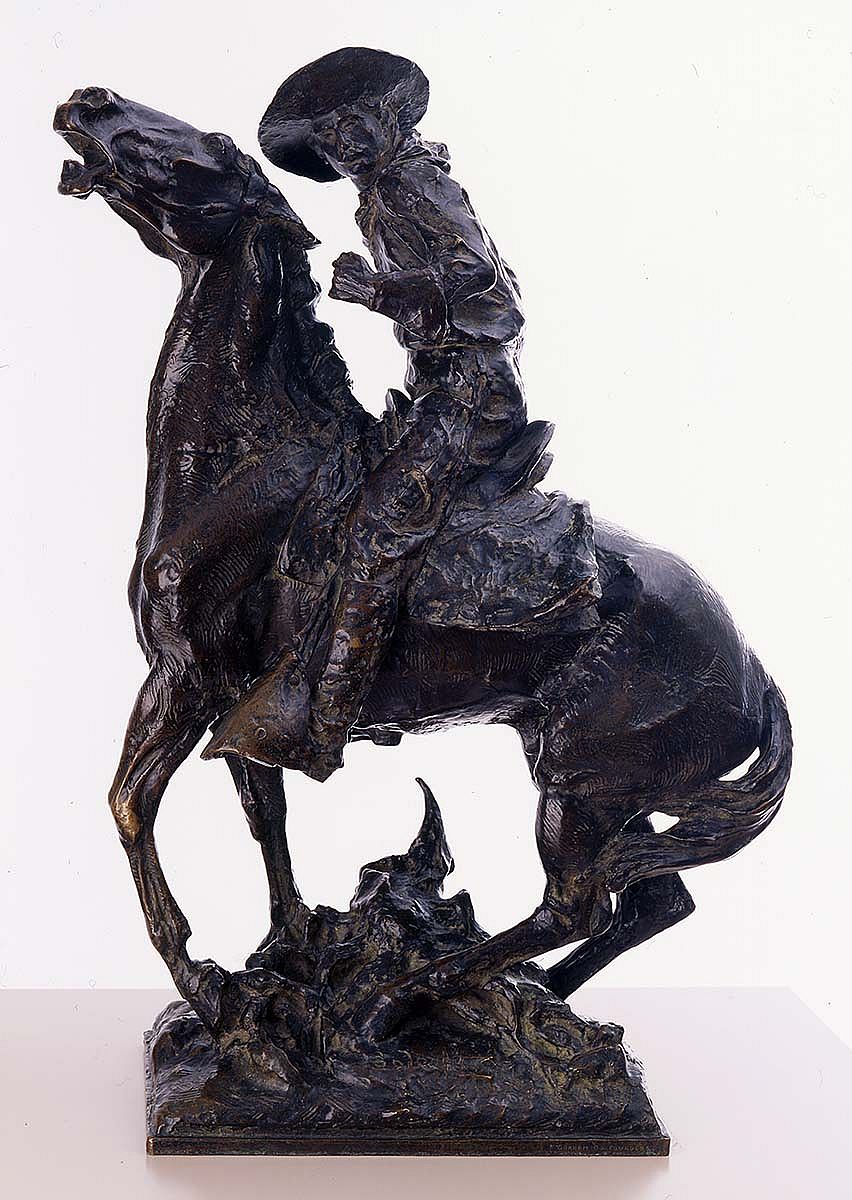
One of the museums that rejected the show was the Phoenix Art Museum. Its director, James Ballinger, wrote that if the exhibition were more of a cross-section of western sculpture, rather than one focused on a single artist, his institution would have been interested. The original Borglum idea was subsequently abandoned, but the thought of a broadly conceived assemblage of western masterpieces in bronze began to germinate from Ballinger’s response.
In 2005, I took the position of director for what became the Petrie Institute of Western American Art at the Denver Art Museum. The museum’s director, Lewis Sharp, had been the curator of American sculpture at the Metropolitan before taking on a leadership post in Denver. He was a serious supporter of the museum’s western program and embraced the notion of a western sculpture spectacular. Through the auspices of Lewis Sharp, the project was brought to the attention of Thayer Tolles, the current curator of American paintings and sculpture at the Metropolitan; from that, a collaboration was born.
The time frame for the exhibition, 1850–1925, coincides with the heyday of the historic West. It was also a time in American cultural history that saw tremendous vigor and innovation in the arts, especially sculpture. Those decades witnessed an abundance of monumental sculpture commissions meant to enhance American cities from coast to coast along with a number of world’s fairs that boosted the nation’s international presence. In many instances, those commissions and fairs concentrated on western themes.
Concurrently, artists known for their western savvy and dedication began to emerge. Alexander Phimister Proctor from Denver, for example, won a place among dozens of American sculptors to produce monuments for the grounds of the 1893 World’s Columbian Exposition in Chicago. His charge was to create giant representations of western wildlife to decorate the bridges at the fair.
Frederic Remington of New Rochelle, New York, a frequent traveler in the West, was commissioned to render a giant mounted cowboy in Philadelphia’s celebrated sculpture garden, Fairmount Park. Solon Borglum, who had been raised in Nebraska, was invited to model four huge plaster sculptural tributes to salient western subjects for the St. Louis Louisiana Purchase Exposition of 1904. Through such venues, the sculptors gained recognition, and the medium of sculpture garnered broad public sanction.
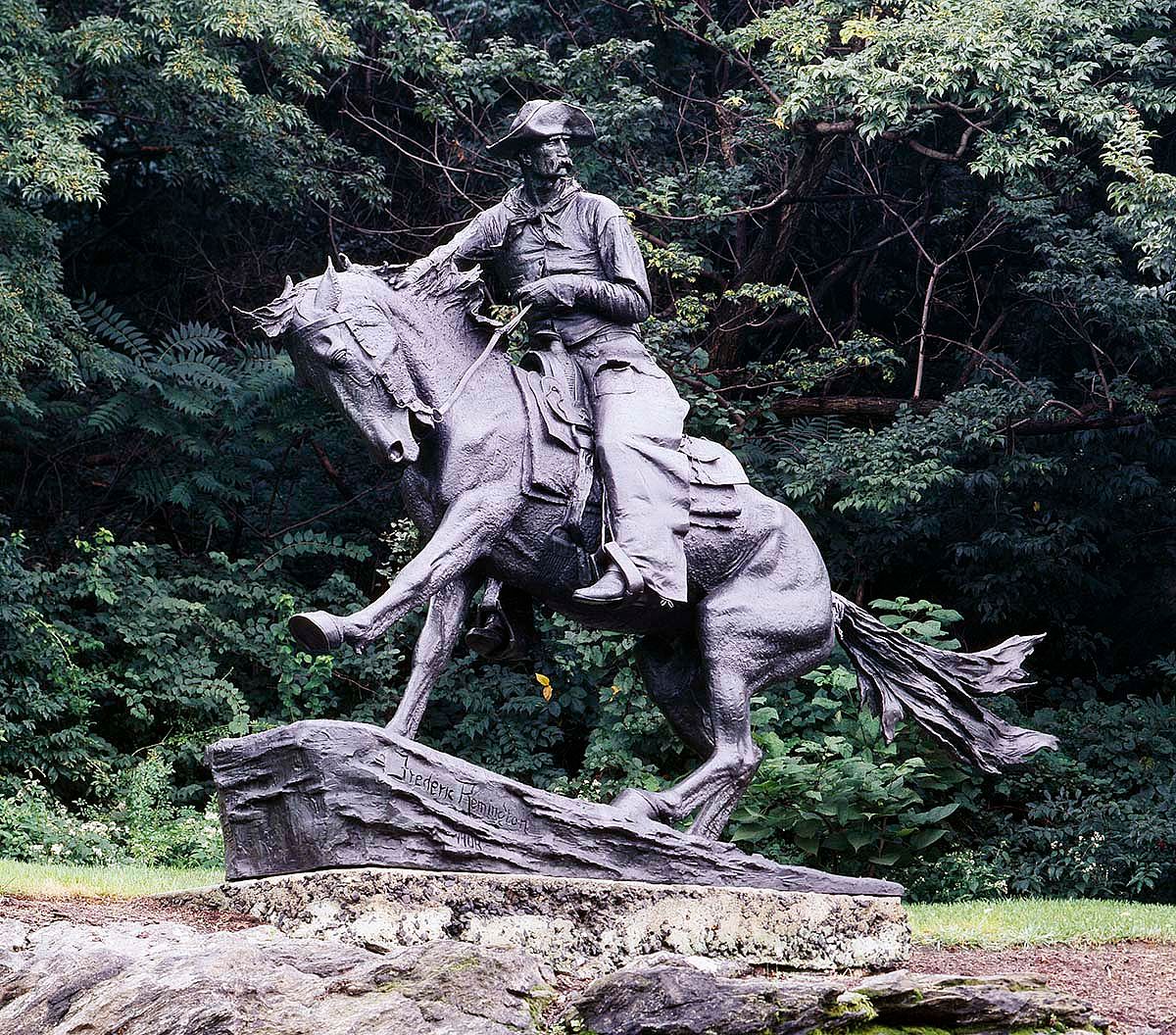
Given that the exhibition, The American West in Bronze: 1850–1925, was slated for museum galleries, we could not include monument-sized works. But the leading sculptors of that period found that tabletop scaled works were increasingly popular with American collectors after 1890. Themes related to the West were universally appealing, and these central motifs, as well as the artists’ stylistic approaches, seemed to vary—even compete—through the decades.
As examples, Proctor’s classical Beaux-Arts Indian Warrior (1898) promoted the concept of the idealized Plains Indian as a symbol of the nation’s stature, physical strength, masculine vigor, and bellicosity. Remington’s iconic The Broncho Buster (1895) sought to supplant Proctor’s claim of the Indian as a seminal emblem of America and replace it with the rustic cowboy. Here man sits in control of nature, taming a wild horse, just as the West had been tamed by Anglo aggression, perseverance, and valor.
Borglum’s Buckey O’Neill (1906), a rare casting of which was loaned to the exhibition by the Buffalo Bill Center of the West, followed the same narrative in celebrating the cowboy’s heroic role in the nation’s first foray into international expansion, the Spanish American War. And Henry Shrady, an acclaimed animal sculptor, pressed his interpretation of the majestic American bison, Elk Buffalo (1899; view in National Museum of Wildlife Art’s online collection), as the metaphorical avatar of the American spirit. Though imperiled by near extinction, the magnificent brute stands his ground as if knowing that Americans will eventually accord him honor and a lasting place in the natural world that was being gradually preserved through efforts of national parks and nascent conservation groups like the Boone and Crockett Club.
It is appropriate that the exhibition had its premier opening in New York City. It was there, after all, that Proctor trained and produced in 1892 one of his first commissions, the horse for Augustus St. Gaudens’ Sheridan monument just a few blocks south of the Metropolitan on Fifth Avenue. Remington exhibited his initial castings of The Broncho Buster in the Fifth Avenue window of Tiffany’s in New York as early as 1895.
And Borglum, a burgeoning young sculptor fresh from the Académie Julian of Paris in 1904, found welcome critical acclaim in New York newspapers for such works as On the Border of the White Man’s Land, originally modeled five years earlier in France. Even Charlie Russell, the cowboy artist of great western renown, was connected to New York City. He modeled his first formal sculpture there in 1903, and had it cast and marketed there as well. Called Smoking Up, it portrayed a dissolute cowhand celebrating payday in Montana. An exquisite early casting of that work was featured in the exhibition.
The Buffalo Bill Center of the West is the repository of works and archives of the one sculptor who was represented by more sculptures than any other in the exhibition: Alexander Phimister Proctor. The galleries of the Whitney Western Art Museum, reinstalled in 2009, feature a handsome installation of Proctor’s studio, and the museum honored his artistic achievement by hosting a major retrospective exhibition in 2003. Russell, Remington, and Borglum are also well represented in the traveling exhibition as well as in the Center’s permanent collection.
The show—which was accompanied by a catalog with essays from several western art historians—graced the galleries of the Metropolitan through the winter of 2013/14 and closed on April 14, 2014. The bronzes, some sixty in number, then traveled to the Denver Art Museum, which hosted the collection between May 9 and August 13, 2014. After that, a remarkable thing happened. No, the show did not go to the Phoenix Art Museum in Arizona, as Ballinger might have wished, but rather took a rather more extended trajectory, to the Nanjing Museum in China, where it ran September 29, 2014, through January 18, 2015, introducing yet another audience to the American West through these masterworks of sculpture.
The American West in Bronze: 1850–1925 was made possible by the Peter Jay Sharp Foundation, the Henry Luce Foundation, the Terra Foundation for American Art, and the Enterprise Holdings Endowment. It was organized by the Metropolitan Museum of Art, New York, in collaboration with the Denver Art Museum.
Peter Hassrick was Director Emeritus and Senior Scholar for the Center of the West. A prolific writer and speaker, he was honored by the University of Wyoming with an honorary doctorate degree in 2017. He served as guest curator of numerous exhibits nationally and internationally. He was a former twenty-year Executive Director of the Center of the West and served tenures directing the Denver Art Museum’s Petrie Institute of Western American Art, the University of Oklahoma’s Charles M. Russell Center for the Study of Art of the American West, and the Georgia O’Keeffe Museum, as well as worked as collections curator at the Amon Carter Museum. Hassrick passed away in 2019.
From the New York Times
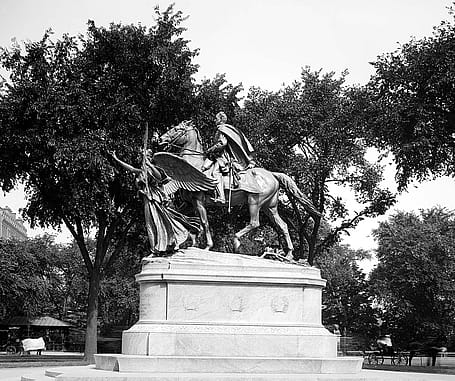
Carol Kino featured The American West in Bronze in an October 25, 2013, Times story titled “Esteem for the Art of the American West.”
“The art of the American West has long been honored in the states whose history it records,” she wrote, “but it hasn’t always been accepted in the larger art world. Thirty years ago, it was often seen as an out-of-touch genre, fed by a love of nostalgia and history…. But today…scholarship is creating a renewed appreciation for the field.”
The story shared exhibition artwork, themes, and cultural implications—including a reference to our Buffalo Bill—The Scout, created by sculptor Gertrude Vanderbilt Whitney.
Post 286
Written By
Nancy McClure
Nancy now does Grants & Foundations Relations for the Center of the West's Development Department, but was formerly the Content Producer for the Center's Public Relations Department, where her work included writing and updating website content, publicizing events, copy editing, working with images, and producing the e-newsletter Western Wire. Her current job is seeking and applying for funding from government grants and private foundations. In her spare time, Nancy enjoys photography, reading, flower gardening, and playing the flute.
